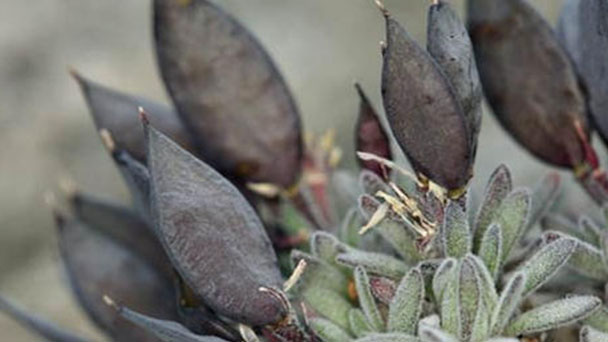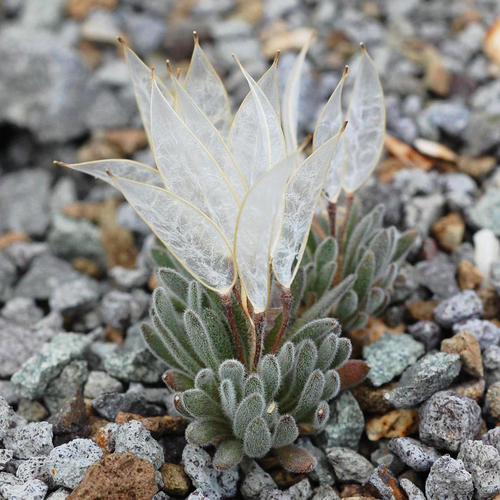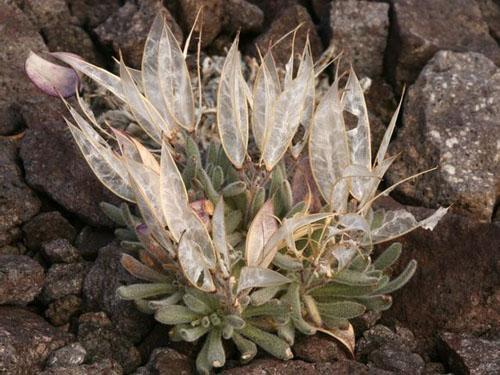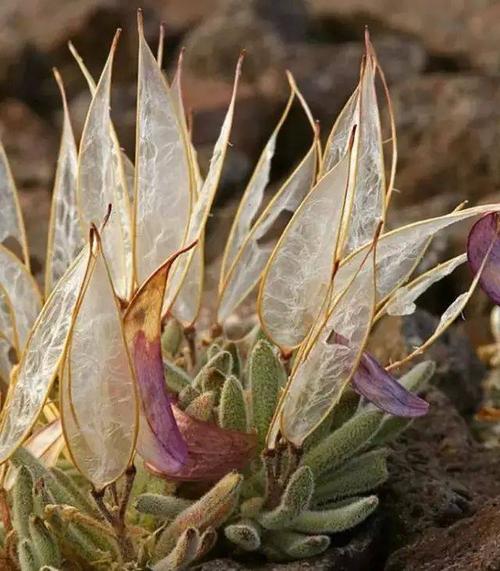Daggerpod (Anelsonia) profile
Written by Maggie
Mar 16 2021

Daggerpod (Anelsonia) is a fleshy perennial herb. When the fruit ripened, the valves and seeds fell off, leaving only a membranous diaphragm, like cicada wings. Daggerpod belongs to the mustard family of the Cruciferous family.
Daggerpod picture

Morphological characteristics of the Daggerpod
Daggerpod is a fleshy flower with small rosette leaves, gray-green, soft, fleshy and hairy. Small white flowers with dense inflorescences. Fruit is 2-3 cm, elliptic. Its leaves are a small clump of grayish green and look low-key. Its flowers like transparent feathers, like gauze, is a very beautiful plant. When the fruit ripened, the valves and seeds fell off, leaving only a membranous diaphragm, like cicada wings.
The Daggerpod's distribution area
Daggerpod grows in high altitude mountains throughout the western United States.

How to grow and care for Daggerpod
Temperature
Daggerpod has cold resistance, below -20℃ can still be safe through the winter.
Light
Daggerpod is fond of light, and sufficient light should be given during the growing period. If insufficient light is given, the leaves will be thin and the crimping degree will be poor, which makes it difficult to highlight the unique charm of Daggerpod. And the plant leaf that grows in sunny enough place is low and brawny, circle twist, have taller ornamental sex, but after April still should build sunshade net, in order to avoid scorching sun insolation, prevent leaf tip to dry up.
Fertilization
Daggerpod is in its peak growth period from autumn to spring of the following year. Apply decomposed dilute liquid fertilizer or compound fertilizer once a month to provide sufficient nutrients for the vigorous growth of the plant. After spring sprout, spray 0.5% potassium dihydrogen phosphate solution 2 to 3 times to promote flowering.
Watering
Daggerpod likes a humid environment, so it is advisable to keep the soil moist during the growing period without water accumulation. If there is a long period of drought and water shortage, the plant will not die, but the growth will stop, and the leaves will turn yellow or even wither. And basin soil long-term water can cause bulb rot.Water can be sprayed on the plant frequently to increase air humidity and prevent the top of the leaves from drying out.

Latest Updated
- Benefits of Bugleweed - 7 Science-backed Health Benefits
- Bugleweed Dangers & Side Effects - Is It Poisonous?
- How to Plant Evergreen Trees - What You Should Know
- When to Plant Evergreens - Grow Guide for Evergreen Trees
- 12 Wonderful Evergreen Shrubs for Your Garden
- 12 Popular Evergreen Plants with Pictures for Beginners
- When And How To Prune A Lilac Bush Like a Pro
- How to Grow & Care for Lilac Vine (Hardenbergia Violacea)
- Japanese Lilac Tree (Syringa Reticulata) Care & Propagation Guide
- Shumard Oak Pros and Cons - What to Know
Popular Articles
- Winter maintenance of Antirrhinum Majus
- How to Grow Terminalia Mantaly Tree
- How to Grow and Care for Crossostephium Chinense
- How to grow Antirrhinum Majus in spring
- Peristeria Elata (Dove Orchid) Profile: Info & Care Guide
- Underwatered Snake Plant (Sansevieria Trifasciata) - Signs And How To Fix
- How to Care for Brazilian Jasmine Plant (Mandevilla Sanderi)
- How to Grow & Care for Graptopetalum Purple Delight in Summer
- Rosa Chinensis (China Rose): Plant Growing & Care Tips
- How to Care for Baby Sun Rose (Aptenia Cordifolia)